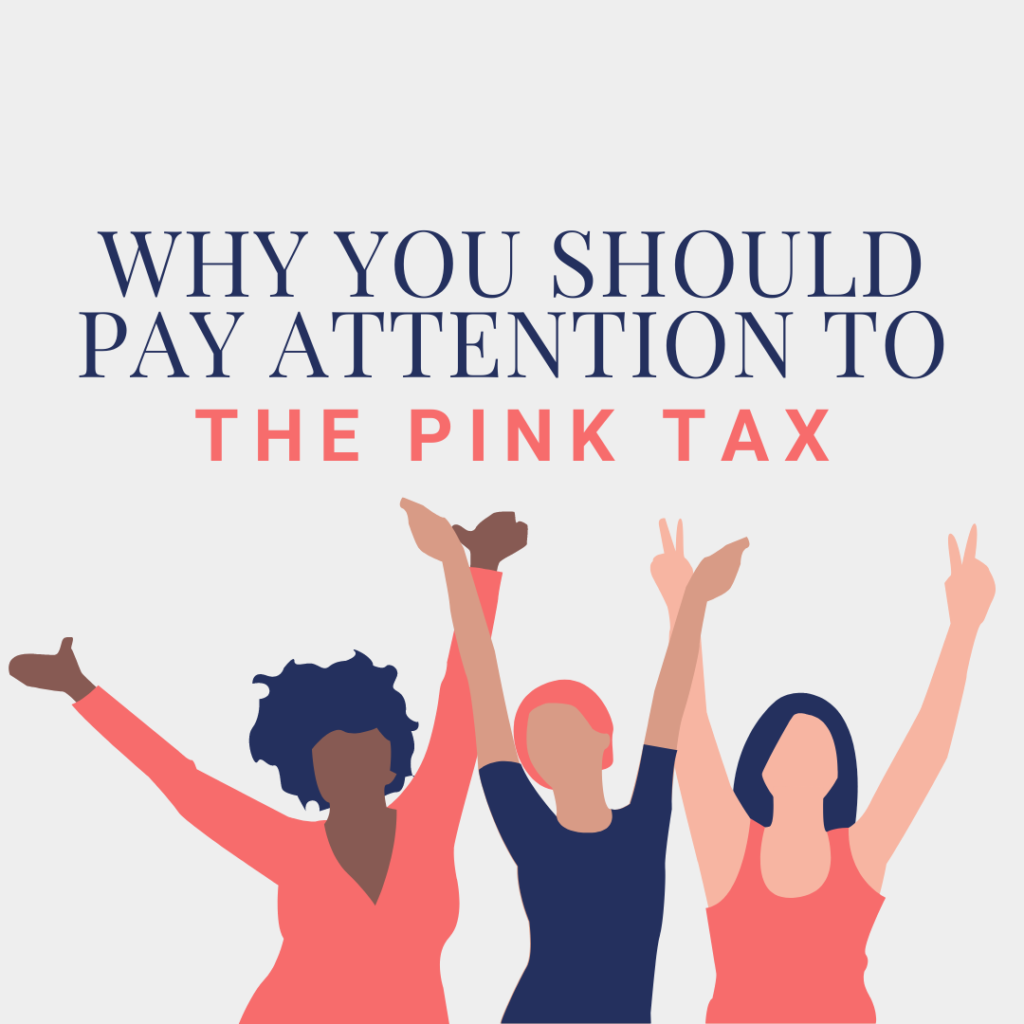Why do bad things have seemingly good names? For those who have never heard the sickeningly sweet name before, the Pink Tax is “a phenomenon often attributed as a form of gender-based price discrimination” which is a very awful thing. While the Pink Tax is nothing new, we think it’s important to keep the conversation going until we see some real change.
What is the Pink Tax?
The Pink Tax is not another name for the wage gap, although it has a similar effect. Essentially, the Pink Tax is the extra amount of money women pay for the same products and services that men use. Some people call it price discrimination or gender pricing, which are far more informative names but they aren’t as catchy.
In many circumstances, there are virtually no differences between men’s and women’s products. Especially when it comes to personal care products. Sure, the color of the product may be different, but if it gets the job done, what does it matter? Spoiler alert: it doesn’t.
What does this mean?
To put it into a practical context, think about deodorant. Whether you’re male, female, or non-binary, we are willing to bet that you sweat and therefore you buy deodorant. Now in a perfect world how much you sweat should impact what kind of deodorant you buy. There would be different products that catered to the amount of sweat you produce (moderate, extreme control, etc.) but that’s not how the aisles at the drugstore look. Instead, there are lines of men’s deodorant and women’s deodorant catering to the different sexes with different smells and packaging designs, but as many women know the men’s deodorant tends to work better – and it’s cheaper. Blogger Shay Marie of Bellatory depicts this reality in one of her popular articles.
“Brands like to jack up the price of women’s products. They sell virtually the same products to men—minus some girly colors and some stuffy granny scents—for vastly lower prices. I was spending anywhere from $5 to $6 for my antiperspirant, and now that I use a man product, I spend $1 to $2 less per stick.”
“Well, just don’t buy products ‘for women’.”
If you’re thinking this, you almost got the point. If prices amongst men’s and women’s products were equal, we wouldn’t have to have this conversation. However, the ugly truth is that because of sales tax in the United States. When the system was built, politicians had to decide what products would be subject to taxes and what would be tax-free.
Sure there are products such as razors or deodorants that people of all genders can use. So, why would any woman buy a product that we don’t think works that well, and costs us more money? Honestly, many women probably don’t realize the shocking difference. If women were fully aware of how much more they were spending per year on average, there’s a good chance they wouldn’t willingly spend the $1,300 more. Yes, you read that correctly, women spend about $1,300 more per year due to the Pink Tax. If you’re curious as to what the estimated price increase is by product type, here’s a quick breakdown.
7% more for toys and accessories
4% more for children’s clothing
8% more for adult clothing
13% more for personal care products
8% more for senior/home health care products
What is being done about it?
Luckily, more and more people are becoming aware of the Pink Tax and are raising their concerns about it. On the legal side, there have been many attempts to legislate against the Pink Tax on the federal level. However, there haven’t been many successes with national legislation. You may recall the Pink Tax Repeal Act, which was first introduced in 2016, then reintroduced in 2018, and then again in 2019. The bipartisan act is still up for debate and back in 2021, Congresswoman Jackie Speier again reintroduced the act. Maybe 2022 will be the year the Pink Tax Repeal Act will finally be passed.
On the bright side, there have been a few successes on the local level. Some states have been pushing against this discriminatory pricing. For example, New York City and California have passed laws that make it difficult for gender-based pricing to occur. Yes, these are small victories, but they are victories nonetheless.
How can you avoid the Pink Tax?
For now, the best way to make your opinion known is to get in contact with your state representatives and voice your support! Not only for the Pink Tax Repeal Act but all issues about gender equality and women’s rights. Let it be known that we will not stand for gender discrimination and the Pink Tax.
If you’re looking to make immediate changes to avoid the Pink Tax, keep your eyes out for the brands that have opted to utilize gender-neutral marketing and packaging practices. Dollar Shave Club has addressed the Pink Tax issue head-on, and other companies like Public Goods have stayed away from the gender-stereotyped designs as a whole and we’re slowly starting to see more companies follow those footsteps. We hope that one day, economic discrimination will not be as blatant nor as tolerated as it is today, until then, we’ve got work to do.
As for now, write to your representatives and support companies that address the Pink Tax. Together we can combat the issue, but it will take time and work. Cheers to a Pink Tax-free future!




